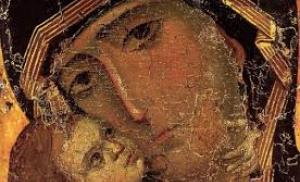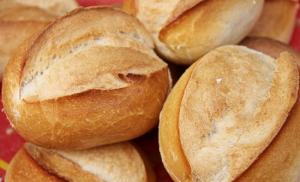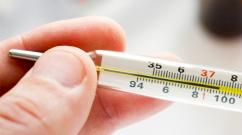Great spotted woodpecker: description, habitat, photo. Woodpecker
Great spotted woodpecker, or spotted woodpecker (Latin Dendrosoros major) is a fairly large bird belonging to the most famous representatives of the Woodpecker family and the genus Spotted woodpecker from the Woodpecker order.
Description of the spotted woodpecker
A distinctive feature of the spotted woodpecker is its color.... Young birds, regardless of gender, have a very characteristic "red cap" in the parietal region. The Great Spotted Woodpecker includes fourteen subspecies:
- D.m. Mаjоr;
- D.m. Brevirostris;
- D.m. Kаmtsсhaticus;
- D.m. Рinetоrum;
- D.m. Hispanus;
- D.m. harterti Arrigoni;
- D.m. Canariensis;
- D.m. thаnnеri le Rоi;
- D.m. Mаuritаnus;
- D.m. Numidus;
- D.m. Poelzami;
- D.m. Jaronicus;
- D.m. Cabanisi;
- D.m. Strеsеmаnni.
In general, the subspecies taxonomy of the great spotted woodpecker has not yet been developed well enough, therefore, different authors distinguish from fourteen to twenty-six geographical races.
Appearance
In size, the spotted woodpecker resembles a thrush. The length of an adult bird of this species varies within 22-27 cm, with a wingspan of 42-47 cm and a weight of 60-100 g. The color of the bird is characterized by a predominance of white and black colors, which go well with bright red or pinkish coloration of the undertail. All subspecies have a variegated appearance. The upper part of the head, as well as the region of the back and upper tail have a black plumage with a bluish sheen.
The frontal region, cheeks, belly and shoulders are brownish-white in color.... In the area of the shoulders, there are rather large white fields with a black dorsal stripe between them. Flight feathers are black, with wide white spots, due to which five light transverse stripes are formed on folded wings. The tail is black, except for a pair of extreme white tail feathers. The bird's eyes are brown or red, and the beak has a noticeable lead-black coloration. A pronounced black stripe begins at the base of the beak, which extends to the side of the neck and the neck. A black stripe borders the white cheek.
Males differ from females by the presence of a red transverse stripe on the back of the head. The juveniles are characterized by a red crown with red-black longitudinal striae. Otherwise, young woodpeckers do not have significant differences in plumage color. The tail is medium in length, pointed and very stiff. Woodpeckers fly very well and quickly enough, but in most cases they prefer climbing tree trunks. Variegated woodpeckers use their wings only for flight from one plant to another.
Lifestyle and behavior
Great spotted woodpeckers are noticeable and quite noisy birds, often inhabiting areas near human habitation. Most often, such birds lead a solitary lifestyle, and a massive accumulation of woodpeckers is characteristic of the invasion of the nominative subspecies. Sedentary adults have an individual feeding area. The size of the forage area can vary from two to twenty hectares, which depends on the typical features of the forest zone and the number of conifers.
It is interesting! Before engaging in a fight with a stranger in his own feeding area, the owner takes the so-called confrontation pose, in which the bird's beak opens slightly, and the plumage on the head acquires a disheveled appearance.
Same-sex individuals during the period of active breeding can fly into neighboring areas, which is accompanied by conflicts between birds. The appearance of strangers provokes fights, in which the birds strike each other with tangible blows with their beak and wings. The approach of people does not always frighten off the woodpecker, so the bird can simply climb along the trunk closer to the top or fly to a branch located above.
How many variegated woodpeckers live
According to official data and observations, the average life expectancy of great spotted woodpeckers in the wild does not exceed ten years. The maximum known lifespan of a woodpecker was twelve years and eight months.

Habitat, habitats
The area of distribution of the spotted woodpecker covers a significant part of the Palaearctic. Birds of this species are found in Africa, Europe, the southern part of the Balkans and in Asia Minor, as well as on the Mediterranean islands and in Scandinavia. A large population lives on Sakhalin, the southern Kuril and Japanese islands.
The spotted woodpecker belongs to the category of extremely plastic species, so it can easily adapt to any type of biotope with trees, including small wooded islets, gardens and parks. The density of bird dispersal varies:
- on the territory of North Africa, the bird prefers olive and poplar groves, cedar forests, pine forests, broad-leaved and mixed forests with the presence of cork oak;
- in Poland, it most often inhabits alder-ash and oak-hornbeam groves, parks and forest-park zones with a large number of old trees;
- in the northwestern part of our country, the spotted woodpecker is abundant in various forest zones, including dry forests, swampy spruce forests, dark coniferous, mixed and deciduous forests;
- in the Urals and Siberia, preference is given to mixed forests and conifers with a predominance of pine;
- on the territory of the Far East, birds of this species give preference to foothill and mountain broad-leaved and cedar-broad-leaved forests;
- in Japan, spotted woodpeckers inhabit deciduous, coniferous and mixed forests.
It is interesting! As long-term observations show, young birds are most prone to movement, and old woodpeckers very rarely leave their inhabited nesting areas.
The total number of spotted woodpeckers within the biotope can decrease several times, and the process of population recovery takes several years.
Diet of Great Spotted Woodpeckers
The food supply of the variegated woodpecker is very diverse, and the bias towards the predominance of food of plant or animal origin directly depends on the season.
Males and females obtain food in different types of territories. In the spring-summer period, variegated woodpeckers eat a large number of various insects, as well as their larvae, represented by:
- barbel;
- goldsmiths;
- bark beetles;
- stag beetles;
- leaf beetles;
- ladybirds;
- weevils;
- ground beetles;
- caterpillars;
- imago of butterflies;
- horn-tails;
- aphids;
- coccids;
- ants.

Occasionally woodpeckers eat crustaceans and molluscs. With the onset of late autumn, birds of this species can be found near human habitations, where birds eat food in feeders or, in some cases, feed on carrion. The destruction of songbirds' nests by woodpeckers, including pied flycatchers, redstart, tits and warblers, is also noted.
Forage is obtained on the trunk of trees and on the surface of the soil... When insects are found, the bird destroys the bark by strong blows of its beak or easily makes a deep funnel, after which the prey is extracted with its tongue. Representatives of the Woodpecker family hammer, as a rule, only the wood of sick and dead trees affected by pests. In the spring, birds feed on terrestrial insects, ruining anthills, and also use fallen fruits or carrion for food.
In the autumn-winter period, the diet of woodpeckers is dominated by plant foods rich in proteins, including seeds of various conifers, acorns and nuts. For poultry of this species, a characteristic method of obtaining nutritious seeds from pine and spruce cones is the use of a kind of "smithy". A woodpecker breaks off a cone from a branch, after which it belongs in the beak and is clamped inside a pre-prepared niche-anvil, which is used as natural cracks or self-hollowed holes in the upper stem. Then the bird strikes the cone with its beak, and then the scales are pinched off and the seeds are extracted.
It is interesting! In early spring, when the number of insects is extremely limited, and edible seeds are completely exhausted, woodpeckers break through the bark on deciduous trees and drink juice.
On the territory occupied by one variegated woodpecker, there can be located a little more than fifty such special "anvils", but most often no more than four of them are used by the bird. By the end of the winter period, a whole mountain of broken cones and scales usually accumulates under the tree.
Also, birds eat seeds and nuts of such plants as hazel, beech and oak, hornbeam and almonds. If necessary, variegated woodpeckers feed on tender aspen bark and pine buds, gooseberry and currant pulp, cherries and plums, juniper and raspberries, buckthorn and ash.
No forest is complete without this bird. The loud and rhythmic sounds of the woodpecker's shot are heard throughout the entire district, especially in spring. If you look closely at the trees, you can see it. This bird is not one of the shy ones and sometimes flies to "make noise" in gardens, on trees under windows or telegraph poles. She is very remarkable and bright, it is impossible to confuse her with anyone else. But the species of woodpeckers may not be distinguished at first glance. The great spotted woodpecker is especially widespread in our country. Let's dwell on it in more detail.
Great spotted woodpecker: description
The fact that this bird is generally difficult to confuse with anyone is primarily due to its specific appearance and the way of obtaining food. The great spotted woodpecker is often compared in size to the thrush, they are about the same. Its body length on average ranges from 22 to 27 centimeters; females are usually smaller than males. The weight of the bird is small - only 60-100 grams. Great spotted woodpecker got this name for a reason, as it has a very bright, contrasting color of plumage in black and white tones and a red (and sometimes pink) undertail.

The male from the female can be distinguished by the color of the back of the head. All young individuals have a red cap on their heads, which disappears with age. on the back of the head remains only in males. The top of the head turns black. The bird's cheeks, forehead, belly are white, depending on the habitat, their shade can change from bright and clean to beige or almost brown. The Great Spotted Woodpecker has a very decent wingspan, reaching almost half a meter (42-47 centimeters). The shape of the tail is also worth noting. It is pointed (wedge-shaped), has an average length; very tough, since it plays the role of support when the bird moves along the paws, typical for woodpeckers - zygodactyl, that is, the two front toes are opposed to the two rear ones. The average bird is about 9 years old.
Great spotted woodpecker: habitat
This is a very common bird with a wide habitat - from the Canary Islands to Kamchatka and Japan. Most often, birds are sedentary, less often - nomadic. The latter is mainly associated with habitats that are unfavorable from the point of view of the food supply, therefore the birds are forced to migrate (invasions) to neighboring regions. Great spotted woodpecker (photo can be seen in the article) is very undemanding to the place of residence and takes root almost everywhere where trees grow, from taiga forests to city parks. Surprisingly, the choice depends not only on the country in which the birds live, but even on the regions. So, in Siberia and the Urals, the woodpecker chooses coniferous forests and mixed, but with a predominance of pines, and in the north-west of the country prefers pine forests and spruce forests.

What does a woodpecker eat in summer?
Many still remember from school about the so-called. These include the wolf and the woodpecker. The bird prefers to settle in forests where there are many old and rotten trees. Woodpeckers have a very varied diet. The predominance of plant or animal food in it depends on the season. It is noteworthy that males and females find their food in different territories, and sometimes even in separate forests. The spring-summer diet consists mainly of insects and their larvae. First of all, these are, of course, various beetles, including those that feed on wood, as well as their larvae: barbel beetles, bark beetles, stag beetles, weevils, ladybugs, gold beetles. The Great Spotted Woodpecker makes 130 beats per minute with its beak. This is a powerful enough force, not a single bug or worm will go unnoticed. Also, the bird's diet includes butterflies, including hairy ones, their caterpillars, aphids, ants. Great spotted woodpecker does not hesitate to take carrion, if given the opportunity. It was also found that sometimes these birds destroy the nests of small songbirds.
What do woodpeckers eat in autumn and winter?

In the autumn-winter period, the plant predominates, It includes the seeds of conifers, acorns, nuts. The method of obtaining seeds from the cone is of interest. It is characteristic of all woodpeckers, but this species brought it to perfection. Initially, the woodpecker picks off the cone, then carries it in its beak to a pre-selected place - the anvil, which, in fact, is a clamp or gap in the upper part of the tree trunk. The bird beats the cone with all its force with its beak, and then proceeds to the meal - pecking off the scales, extracts the seeds. One great spotted woodpecker can have about 50 such anvils, but usually uses two or three. Therefore, at the end of winter, a whole pile of cones and scales can accumulate under one tree.
When is the mating season for woodpeckers?
These birds are monogamous. They reach puberty by the end of the first year of their life. It is noteworthy that couples can, after the end of the mating season, remain together until next spring. Or they disintegrate and hibernate separately, but the next year they reunite again.

The behavior of birds during the mating season is very remarkable. Its first signs appear in late February - early March and continue on an increasing basis until the middle of the first spring month. The birds start pairing. Males behave extremely noisy, talk loudly and scream aggressively. Females respond to them, but less noticeably. Approximately in the middle of May, when the pairs have already decided, the construction of nests begins.
Woodpecker nesting
The tree in which the hollow will be located is chosen by the male. It should not be rotten, but with soft wood (for example, aspen or alder, less often oak or birch, larch).

The great spotted woodpecker (photo above), living in light-leaved forests, prefers to make a new hollow every year. If its habitat is dense conifers, then the bird returns to the old one. The hollow, as a rule, is located at a height of up to eight meters and has a depth of about 25-35 cm, and a diameter of about 10. The construction is mainly carried out by the male, and the female only occasionally replaces him, in time it takes up to two weeks. Woodpeckers lay their eggs in mid-spring, around the end of April. In a clutch, there are from 5 to 7 small eggs of white, glossy. Both parents take part in incubation, but at night - only the male. Chicks hatch naked, helpless and blind for 10-12 days.
Lesser and great spotted woodpecker: differences
- By the nature of the color of the plumage. In a small species, a transverse black stripe on the cheek does not reach the back of the head and is interrupted by a white spot. In addition, it does not have a pink or reddish undertail. But on the head of the small woodpecker there is a cap - red with a black border in males and white in females.
- Great spotted woodpecker and lesser spotted woodpecker differ by the nature of the sounds emitted. In the first type, the roll is very short and lasts about 0.6 seconds, includes 12-13 beats, but it is almost impossible to distinguish them, since they merge into one continuous sound. In addition, it quickly loses its sonority, starts out loud, but fades out quickly. The Great Spotted Woodpecker makes 130 beats per minute, its beat is sometimes heard at a distance of up to one and a half kilometers. The sounds made by the lesser woodpecker are more like the voice of songbirds, they are more drawn out. And his shot is also longer, but not as sonorous as in the first species, lasts an average of 1.5 seconds.
- Lesser spotted woodpecker slightly smaller, its length is approximately 14-15 centimeters.
- They differ in their preferences for choosing a habitat. Lesser spotted woodpecker prefers deciduous and mixed forests, the shores of water bodies, swamps. He tries to avoid dark conifers.
Does the woodpecker have enemies?
It would seem that such a bird, in principle, cannot have enemies, because, having a powerful beak, it may well stand up for itself. But in reality, everything is somewhat different. There are few data on attacks on woodpeckers by birds of prey, but they are still there. Basically, they are endangered by sparrowhawks, goshawks, in flat areas - peregrine falcon.

Among terrestrial predators, it is worth noting the marten and ermine. Even woodpecker nests, which seem to be hidden and protected, are sometimes ruined by squirrels, dormouse and (a kind of bats). It so happens that woodpeckers are forced out of old hollows by starlings.
Woodpecker adaptability to environmental conditions
Almost all animals and birds have a certain set of characteristics that arose as a result of adaptation to the factors of the external world. Great spotted woodpecker is no exception. The traits of adaptability to the environment are given below.
- The tenacious claws on the paws help to easily grip the tree trunk or thin branches.
- Stiff wedge-shaped tail prevents sliding down the trunk; it is more suited for climbing trees than flying.
- The long strong beak helps to break through the bark of trees and make holes in them for nesting, as well as to get food.
- Long, thin and sticky tongue helps to get insects out of the most difficult to reach places.
Report on the topic "Woodpecker" will tell you about these beautiful animals.
Woodpecker report
Woodpecker is a bird from the woodpecker family, which has about 220 species. The most common are the great and lesser spotted woodpecker. The main habitat is North Africa and Europe, and only 5 species live on the American continent.
What does a woodpecker eat?
The woodpecker feeds mainly on bark beetle larvae and insects, which it gets from under the bark.
The woodpecker is a very useful bird, it relieves trees of bark beetles. Eats 750-900 bark beetles per day. Every year he makes himself a new hollow, and leaves the old one to other birds.
In winter, the woodpecker feeds on the seeds of coniferous trees.
Woodpecker description
The woodpecker has a variegated color. He climbs trees well, he is helped in this: short legs with tenacious claws. The hard tail makes it possible to reliably abut against the trunk to form a strong support The woodpecker's beak is straight, strong and sharp.
The structure of the skull of this bird helps to protect the brain from sudden and frequent blows. In addition to the strong bone of the head, there is a whole system of softening, represented by additional fluids and sinuses.
The male and the female make the nest together, hollowing it out in the trunk of an aspen, alder or birch. At night, woodpeckers rest in an upright position, clinging their claws to the trunk of a tree or to the walls of the hollow.
The woodpecker is called the orderly of the forest! The woodpecker rejects sick, pest-infested trees.
Woodpeckers move along the tree in a spiral and constantly tap, gouging the bark. The bird's tongue is covered with sticky saliva and small denticles with which it pricks insects.
How do woodpeckers live?
These birds are sedentary. They do not fly to warm countries for the winter. The most they can do is a short flight to another forest, where there will be food all winter. The way they are fed allows them to winter in the same places, because in winter, when there is no way to find insects, they can eat the seeds of pine trees.
For its nest, the woodpecker makes a hollow, finding depressions on dry trees and enlarging them with the help of its beak.
In the spring, the males arrange real duels on the drums. Having found a dry standing trunk, the duelist chooses a place on it that is as dry as possible in the sun. It is it that makes the loudest and most sonorous sound when the musician begins to quickly knock on it with his beak. It is these fractions that we hear in the spring forest.
Great Spotted Woodpecker somewhat larger than a starling - the largest of the group of variegated woodpeckers; its average weight is 80-90 g. Body length 23-25 cm, wing 16 cm, tail 8.5 cm.
Distributed very widely - throughout Western Europe and almost throughout the European part of Russia.
Like all woodpeckers, they climb well on tree trunks.
Plumage coloring. The back, top of the head and neck, wings, tail and stripes from the beak to the back of the head are black. The cheeks, throat, forehead, chest, abdomen, stripes on the wings, tail and shoulders are white. The undertail is red. Older males have a red nape, young males have a crown.
Biotope. Various types of forest, but tends more towards coniferous and mixed forests.
The nature of the stay. Great spotted woodpeckers are sedentary and nomadic birds.
Migration. At the beginning of autumn, most of the young animals leave the reproductive area and enter the period of autumn-winter migrations. In winter, the spotted woodpecker roams widely and can move along forest shelter belts far to the south. Only by the end of February, most woodpeckers return to their future breeding sites.
Reproduction. The breeding season for spotted woodpeckers begins in April-June. At this time, one can observe characteristic current flights, accompanied by specific cries.
For nesting, the woodpecker uses up to 30 tree species and always makes a hollow in dry or damaged trees. The average height of the nesting hole is 3.4 m. The dimensions of the nesting hole: the depth of the hole from the bottom edge of the hole usually does not exceed 35 cm, and the width of the nesting chamber is 13. There are 5-7 eggs in a clutch (size 2.8 x 1.5 cm), incubation lasts 12-13 days. Chicks are fed by various insects, mainly ants. During the reproductive period, the great spotted woodpecker often attacks the nests of small passerines and abducts chicks.
It gets food both from under the bark and from the surface of trees and even on the ground, on which it jumps quite often. The diet of the Great Spotted Woodpecker is very diverse. He eats various insects, especially tree pests, destroys many May beetles. Coniferous seeds occupy a significant place in the diet in winter. His "smithies" are best known for the numerous remains of pecked cones. In winter, the great spotted woodpecker can also be found within cities and towns of the region, where it willingly visits feeders and even dumps.
The whole day tirelessly taps the trees with his beak, and usually spends the night in hollows, in his nests, or in hollows deliberately hollowed out by him for this.
To the liking of the Great Spotted Woodpecker, it is a very lively and agile bird; by the way, he is very grumpy and fervent with other woodpeckers, and the males often fight violently among themselves. Hearing the knocking of another woodpecker nearby, the spotted woodpecker flies towards him and tries to drive him away.
In spring, this woodpecker often produces a characteristic pounding beat, the so-called "drum trill", heard over a long distance. This woodpecker makes a trill, knocking with its beak on a dry knot or dry top of the trunk with great speed.
The Great Spotted Woodpecker is abundant everywhere and is therefore especially useful.
Literature:
1. Boehme R.L., Kuznetsov A.A.
2. A. A. Salgapsky. Birds and beasts of our forests
3. Brief guide to vertebrates. I.M.Oliger. M., 1955
4. Birds of Europe. Practical ornithology, St. Petersburg, 1901
5. Birds of the north of the Lower Volga region. Saratov University, 2007 Authors: E.V. Zavyalov, G.V. Shlyakhtin, V.G. Tabachishin, N.N. Yakushev, E.Yu. Mosolov, KB. Ugolnikov
Species composition of woodpeckers
On the basis of literary sources, it has been established that seven species of woodpeckers live on the territory of the Trans-Baikal Territory.
1. Black woodpecker, or yellow (Dryocopus martius L.)
2. Three-toed woodpecker (Pucoides tridactylus L.)
3. Lesser spotted woodpecker (Dendrocopos minor L.)
4. Turntable (Jynx torquilla L.)
5. White-backed woodpecker (Dendrocopos leucotos)
6. Gray-headed woodpecker (Picus canus)
7. Great spotted woodpecker (Dendrocopos major L.)
One species is migratory - worm-necks, the rest are found all year round. The most abundant is the great spotted woodpecker, found throughout the region. Zhelna, three-toed woodpecker and gray-haired woodpecker are common species, but their numbers are small. The white-backed woodpecker nests in the southeastern regions, preferring mixed forests dominated by larch. Pinwheel and Lesser Spotted Woodpecker are also quite abundant, especially in floodplain forests.
Black woodpecker, or gall (Dryocopus martius L.)
Zhelna is one of the largest woodpeckers. The size of a crow. The color is dull black, the eye is white. The male has the top of the head, and the female has a crimson-red nape.
The flight is uneven, "lax", with irregular flaps of the wings. Juveniles are similar to adults, but the plumage is without shine, brownish, dark markings on the red cap, the beak at the end is not chisel-like, as in adults, but pointed. Weight 250-450 g, length 42-49, wing 22, 8-26, 0, span 64-80 cm.
The black woodpecker inhabits the entire north of Eurasia - forest, forest-steppe and partly steppe zones.
Black woodpecker. Photo: Tomi Tapio K
In the Moscow region, it is desirable to settle in tall, complex spruce forests, in white-moss pine forests, bilberry and cowberry forests. In the western suburbs, it is not uncommon in forests of water protection significance and, for example, in a taiga-type forest area along the river. Moscow, on an area of 4000 hectares in 1956, 5 pairs of these birds lived. Its numbers change over the years, and in 1921-1926. only 2 couples lived in the same area.
According to Izmailov I.V. (1967), the number of birds in the forests of the Vitim plateau is 0.8 wasps / km 2 - in river waters, in other stations - mountain woodlands, pine forests, larch-birch groves and chops - this is a rare bird, the number of which does not exceed 0.3-0.4. In the Lena-Aleginsky interfluve, according to the data of Larionov G.P. et al. (1991), the population density of the zhelny was 0.4 wasps / km 2, in pine forests - 0.6. In the conditions of the Trans-Baikal Territory, it is found in the zone of taiga, mixed and pine forests, but is scarce everywhere: in pine forests - 0.5 ind./km 2, mountain dark coniferous taiga - 0.4, key mixed forests - 0.2 (Izmailov I V., Borovitskaya G.K., 1973).
Black woodpeckers are inhabitants of old tall-stemmed coniferous and mixed forests, both in continuous taiga and in isolated forest areas, up to steppe forests. They like to settle near recent fires or other areas of the forest with sick and dead trees.
The reproductive cycle begins in March, when loud drum trills are audible, reaching special strength in early April. From time to time can be heard ringing, far away in the forest, cries of "cru-cru-cru ... truyuuu ... truu ... truu", emitted by birds in flight, or drawn out "kneeyy" and "kiaay" - from the trees.
At the beginning of April, the zhelny begin to make preparations for the construction of the nest. For the hollow, tall trees without twigs are chosen. Most often it is aspen, less often - pine, spruce, etc. From the ground to the hollow not less than 4-5 m, usually more than 10. Both members of the pair are hollow, but the male is larger. The entrance often has a rectangular shape, with an average size of 8.5 x 12 cm, the depth of the hollow is 35-55, the diameter is 15-20 cm.In the clutch there are 3-6, more often - 4-5 white eggs, their sizes are 30-39 x 22-28 mm. Male and female incubate alternately, then chicks are fed together. At the nest, they are careful and silent. The male is more diligent in nesting concerns. Duration of incubation is 12-14 days.
Newly hatched chicks can be quite unattractive. Only the upper part of their body is covered with very rare black-gray down, their head is very large, and their beak is disproportionately thick. They stay in the nest until they learn how to fly; they climb along the walls of the hollow and often look out of it, sticking their heads out into the hole. The female spends the night together with the chicks, and the male spends the night in the hollow, hollowed out by him in the previous year.
Chicks fly out of the nest at the age of 24-28 days. Before departure, they constantly scream for several days, leaning out of the hollow.
Black woodpeckers feed mainly on insects that damage bark and wood, their larvae and pupae - longhorn beetles, bark beetles, sapwoods, golden beetles, horn-tails. Recently dead trees are sanded, wood is hollowed. In snowless time, and often in winter, they dig in anthills, eating both adult ants and their offspring. Occasionally they eat chicks from other hollow-nesting birds, drink vegetable juices.
At the end of summer and autumn, the young settle, often wandering over tens of hundreds of kilometers from their native hollow. Adult birds live sedentary or also wander. The maximum known age is 7 years.
Three-toed woodpecker (Pucoides tridactylus L.)
A medium-sized bird (larger than a starling). The top of the neck, back, wings, tail and spots on the sides are black. The underside of the body, spots on the back, wings, tail and stripes on the sides of the head are white. The male has a lemon-yellow cap with black and white thin strokes, the female has a gray-haired cap with black and white longitudinal streaks. There are 3 toes on the leg, since the 1st toe is reduced.
Young (both males and females) with a yellow cap, all black areas of plumage with a brown tint, white areas on the head less than in adults, brown bloom on the sides and abdomen. Weight 50-90 g, length 21-24, wing 11, 8-13, 2, span 33-37 cm.

Three-toed woodpecker. Photo: Armandas Naudžius
Three-toed woodpeckers are found in all types of forests; they prefer dense massifs of mountainous dark-coniferous taiga, in particular, fir and larch forests. They prefer shady, damp, sometimes swampy areas, they also gravitate towards fumes, where there is a lot of dead wood, old clearings with stumps and dead wood.
According to Izmailov I.V., Borovitskaya G.K. (1973), the number of three-toed woodpecker in the mixed forests of the southwestern Transbaikalia is extremely low - 0.03 wasps / km 2. In the northern regions, it slightly increases. So, according to the accounting data of Izmailov I.V. (1967), in pine forests and larch-birch groves in the south of the Vitim plateau, the population density was 0.2 ind./km 0, 6. In larch forests in southern Yakutia in July 1986, the average number was 0.2 wasps / km 2, in mixed forests - 0.4 (Larionov et al., 1991).
The three-toed woodpecker starts breeding early. At mating time, they also emit more drawn-out sounds and trills like chirping.
Drumming begins even in full winter. Hollows are hollowed out in dry decaying larches or in other trees, at different heights, usually not high (rarely higher than 6 m), sometimes in stumps. The diameter of the hollow is 8-14 cm, the depth is 20-35 cm, the entrance is 4-5 cm in diameter. Old tree hollows of their own species and variegated woodpeckers also inhabit. In a clutch there are 3-7, more often 4-5 white eggs 21-28 x 17-21 mm in size. Both members of the pair incubate for 11-14 days, starting from the laying of the last egg, both feed the chicks. The nest is restless. Young, barely grow up, become loud. They leave the hollow at the age of 22-25 days and take care of adults for about a month.
The main food of three-toed woodpeckers throughout the year is insects, mainly xylophagous insects (longhorn beetles, bark beetles). In addition to the larvae and imago of longhorn beetles and bark beetles, they also feed on the larvae of horntail, leafworms, scoops, cocoons of wasps, darkling beetles, weevils, sawflies. Along with insects, birds eat seeds of larch, pine, cedar, birch in winter. The three-toed woodpecker feeds mainly on trees, preferring larch, tree stumps and on the ground. The search for food is concentrated in the lower part of the trunks, occasionally on the branches. The forage is obtained by chiselling.
Birds live sedentary in winter. Juveniles move widely in autumn and early winter. Some of the old birds also roam, but they rarely go outside the nesting area.
Lesser spotted woodpecker (Dendrocopos minor L.)
It is a rare, in places common, sedentary species. Listed in the Red Book of Buryatia. The size of a sparrow. The length of the Lesser Spotted Woodpecker is only 16 cm, the wingspan is 30, the length of the wing is 7, the tail is 6 cm. The top of the neck and the front part of the back, the wings and tail are black. The forehead, cheeks, back, transverse stripes on the wings and on the lateral tail feathers and the entire lower body are white. The male has a red cap, while the female has a white, ocher or brownish white cap.
Young birds are colored like adults, but black elements with a brown tint, there are more dark streaks on the back. The male can already be distinguished by the red cap, but it (like that of the young female) is small and with dark "blots".

Lesser spotted woodpecker. Photo: Wojsyl
Lesser spotted woodpecker prefers deciduous and mixed forests in the floodplains of small and large rivers. Usually found in riverine thickets of willows, large willows, bird cherry trees. During non-nesting time, it flies into suburban forests, parks and gardens.
According to Izmailov I.V., Borovitskaya G.K., in 1973, in the key-key mixed forests of the southwestern Transbaikalia, the number of the species does not exceed 0.06 wasps / km 2.
This bird is one of the fastest and most agile birds in its group. With great dexterity, she jumps up the trunks of trees, runs around, always climbs head up, occasionally backing up.
The Lesser Spotted Woodpecker is more common on lateral branches and thin branches of trees than on trunks. It is more mobile and does not stay on the same tree for more than a minute while searching for food.
After winter migrations, woodpeckers appear at nesting sites in mid-late March. At this time, you can hear his "drum roll" and regular screams, which peak in late March - early April. The drum roll of the small woodpecker is crackling, unsonic, sounds often, every 3-5 seconds.
Birds nest in hollows, which are hollowed out in rotten wood - both in trunks and in large branches, at very different heights, from the ground itself (often in stumps) to a height of 10-12 m.The diameter of the taphole is 32-38 mm, the depth of the hollow is 10-20 cm, the diameter is 10-12 cm. They settle only in freshly hollowed out hollows. They begin to nest early, in the steppe regions - in April-May, in the extreme north of the range - in late May - early June. In a clutch there are 3-8 white eggs, more often - 5-6. Their dimensions are 17-22 x 13-16 mm. Male and female incubate clutch and feed chicks. The male sits at night. The incubation period is 14 days. Chicks in the hollow constantly scream. Adults, upon finding a person at the nest, immediately raise a cry, but usually they soon calm down and tolerate the observer near the nest. Juveniles fly out at the age of 3 weeks. Broods very soon disintegrate and chicks pass to independent life.
The main food of the small woodpecker, regardless of the season, is insects. The results of the study of its diet by scientists in southern Yakutia show that in summer birds feed on the larvae of barbel, ants, caterpillars of lepidoptera, dipterans, ants, sawflies, barbel and golden beetles, adults of ants, bark beetles and leaf beetles. In other regions of the south of Eastern Siberia, barbel beetles, bark beetles, sawflies, and butterfly caterpillars are also food items. Scientists have discovered pine nuts in the winter food of woodpeckers in the cedars of the Komar Range.
The main methods of obtaining food are chiselling, pecking, and occasionally catching on the fly.
At the end of summer, juveniles actively move, and in autumn, adult birds also begin to migrate. Lesser woodpeckers spend winter on wanderings, more or less shifting to the south. In the north of the range, these migrations have the character of real migrations. In winter, they are often found in the steppes south of the nesting area.
Spinner (Jynx torquilla L.)
A bird the size of a sparrow. Outwardly, it looks more like a passerine bird with a long movable neck than woodpeckers, retains an external resemblance to them only in the structure of the legs (the 1st and 4th fingers are directed backward) and in the nature of the flight - it is wavy, consists of alternating fast flapping and inertial flight with folded wings.
The top is ash-gray with dark wavy spots and specks; its lower part is white and sparsely covered with dark triangular spots, the throat and lower part of the neck are in transverse wavy stripes on a yellow background, a blackish longitudinal stripe stretches from the vertex to the lower part of the back. The rest of the upper body pattern consists of blackish, rusty and light brown spots. The eyes are yellow-brown, the beak and legs are greenish-yellow. In juveniles, the color is paler, the pattern is coarser, and the eyes are gray-brown. Length reaches 17-20 cm, wingspan 25-30, wing length 8, 0-9, 7, tail 6, 5 cm, weight 32-48 g.
Wryneck. Photo: Arnstein Rønning
The male's spring song - the monotonous nasal cries of "cue-cue-cue ..." or "knyu-knyu-knyu ..." following one after another. They actively sing only in pre-nesting time. The bird caught in the hollow hisses. In case of anxiety - quiet “tech-tech-tech ...”, “pizza”, “pizza-pizza-pizza…”.
Worm-necks live in light forests - mixed and deciduous with uneven-aged stand, while they prefer island forests, edges, clearings, clearings, where there are small groups of trees, young growth and shrubs, rotten stumps. They avoid continuous forests, mountainous dark coniferous taiga, mountain woodlands.
According to Izmailov I.V., Borovitskaya G.K. (1973), in pine, key-key mixed forests, pine and elm forest-steppe of the southwestern Transbaikalia, the number of worm necks was 0, 1-0, 3 wasps / km 2. And in the Vitim plateau, the worm-neck is common - it reaches the highest density in larch-birch groves and forest-steppe groves (4.0 ind./km 2), somewhat less often found in sparse larch forests (1, 5-1, 8); in overgrown clearings and to the north on the Stanovoe Upland it is rare (0, 1) (Izmailov I.V., 1967).
The spinner is a lazy bird, moving only when necessary. Her legs are used for clinging, but, apparently, are not at all suitable for climbing. On the ground, she jumps with heavy jumps and, flying, soon again goes to some tree. From a height, it flies headlong, almost close to the ground itself, flies here with quick flaps of its wings a certain distance in a straight line and again rises upward in a large regular arc. Sitting on a tree, the bird constantly turns its head, now to the left, then to the right, for which it got its name.
Anything extraordinary irritates the turntable. She stretches her neck, ruffles her head feathers and spreads her tail in a fan, and all this is accompanied by slow repetitive nods, or she stretches her entire torso, leans forward, especially when angry, closes her eyes and moves her throat like a tree frog, emitting a strange dull grunt.
The turntable is a migratory bird. They arrive late, in the steppe regions - around the middle - end of April, to the north of the range - at the end of May.
Males begin to sing a few days after arrival, having found a suitable hollow. They nest in woodpecker hollows and natural voids of tree trunks and thick branches, willingly settle in nest boxes and birdhouses. They can occupy voids in buildings, they found nests even in burrows in steep banks and slopes of steppe gullies.
A swirl neck in a woodpecker hollow does not make any nest, in a flat-bottomed hollow it lays several blades of grass in a ring around the middle of the bottom, in a titmouse with a quadrangular bottom it makes a flooring that completely covers the bottom. When settling in someone else's nest, the twirling neck does not make a new one, but lays eggs directly on the dead chicks of the previous owners of the nest.
The clutch is large, from 5 to 14, more often 7-10 eggs of white color and of a rather varied shape, from elongated-ovate or oblong-elliptical to almost round. The dimensions of the eggs are 16-23 x 13-17 mm. They incubate, starting from the laying of the last egg, for 12-14 days. Mainly the female sits, the male replaces her for a short time. The bird sits tightly on the nest, flies out reluctantly. Chicks sit in the hollow for 23-27 days, they are fed by both adult birds. Be careful at the nest. Grown chicks are noisy, before flying out, they can crawl out of the hollow for a short time and hide back in case of danger. The brood stays together for several days, then breaks up.
The spinneck is characterized by a narrow specialization in nutrition in both adults and chicks. On the last, until the fourth day of their life, the parents bring only ant larvae, then along with the larvae and pupae, later - only some pupae. The male and female consume the same food as the chicks, but the number of adult ants in them prevails and in some cases reaches 95% of the total composition of food. Sometimes other insects are found in their food: beetles (May beetles, small dung beetles, bark beetle larvae), lepidoptera (moth caterpillars and butterflies, leafworm caterpillars), orthoptera, aphids. All these feeds are collected partly on the trunks and branches of trees, but mainly on the ground, in forest glades and open places, which explains their desire to settle at the outskirts of the forest. In addition, they feed on the shells of mollusks; the chicks also receive sand as a mineral impurity.
Although, according to the data of scientists who observed the feeding of the chicks in July 1976, it was found that all the food of the chicks consists only of ants and their pupae. Other types of food (molluscs, caddis larvae, leaf beetles, ground beetles, bark beetles, lepidoptera) were not found.
Twirls fly away in August-September one by one, occasionally there are groups of several birds. The main wintering grounds are in Central Africa and South Asia. Adult birds are very attached to their territory and tend to return there in the spring. The young return to their area, but are widely dispersed from the particular place of birth. begin to breed before the age of less than a year, the maximum known age is 10 years.
The question of the economic significance of the collar is complex and controversial. It is usually believed that this bird is harmful by the extermination of red ants useful for the forest. But studies in the Oksky Nature Reserve (Evstratova, 1961) showed that the main food of the turtleneck is not red, but black ants.
White-backed woodpecker (Dendrocopos leucotos)
The white-backed woodpecker is listed in the Red Book of Buryatia. Slightly larger than the spotted woodpecker and similar in color. It is distinguished by the white color of the lower back and the innermost flight feathers, black longitudinal strokes on the sides; the undertail is pink. In the male, the cap is completely red, with whitish specks; in the female, the top of the head is black.
Juveniles have gray "mud" on their chest, black color on the wings and upper back has a brownish tint, pink spot on the undertail is smaller. Already in the nest, the sex of the chicks can be determined: the males have a red cap with black “blots”, and the females have a dirty black cap. Weight 100-130 g, length 26-31, wing 14, 3-15, 9, span 44-49.

White-backed woodpecker. Photo: Alastair Rae
For the first time, the white-backed woodpecker was mentioned in southwestern Transbaikalia in 1891 by V.S. Molleson, and in southeastern Transbaikalia - in 1929 by B.K.Stegman.
Inhabits light deciduous forests and mixed forests of various types, but prefers old, often swampy birch forests and sparse areas of elm and willow plantations in river floodplains. It is very rare in pine-deciduous forests with rotten trees and stumps. During autumn-winter migrations, it occurs in cities.
The white-backed woodpecker belongs to very rare and poorly studied birds of the south of Eastern Siberia. Currently, there are few data on its distribution and the nature of its stay in Transbaikalia. According to the records of Izmailov I.V. and Borovitskaya G.K. (1973), in the southwestern Transbaikalia, the population density of these woodpeckers in the riverine shrub thickets of the floodplain of the river. Selenga was 0.1 o / km 2. In more northern regions, it was either not observed at all (Izmailov, 1967), or only single flights were noted (Skryabin, Filonov, 1962). Information on the ecology of this species is completely absent.
White-backed woodpeckers begin to nest earlier than all other woodpeckers, in April-May. Hollows are made in dead rotten aspens, alders, birches and other deciduous trees, at very different heights. The hollow is very spacious, much larger and higher than that of the spotted woodpecker. A new hollow is made annually, the old ones are not used. In clutch there are 3-7, more often - 4-6 white eggs, their size is 26-31 x 19-22 mm. Male and female incubate for 14-16 days. Chicks sit in the hollow for 27-28 days. Unlike chicks of other woodpeckers, they cry little, only when fed by adults.
Both parents feed the chicks, but the male brings food much less often than the female. It has a watchdog function. The frequency of feeding is quite low - 4 times per hour. Feeding activity is somewhat higher in the morning and evening hours (5-6 times per hour).
The female flies away for food quite far - 200-300 m from the nest, while the male constantly keeps within a radius of 40-50 m and, when disturbed, immediately appears at the nest. Birds forage in the lower (ground) part of the tree. They spend up to 3-5 minutes looking for food on one tree. The chicks do not fly out at the same time. After emergence, parents and fledglings stay together for about a week near the nest, then begin to move and meet singly in different habitats.
White-backed woodpeckers feed mainly on various insects living in rotten wood and under the bark of dead trees: the larvae of longhorn beetles, horn-tails, woodworm caterpillars, leaf beetles, and occasionally spiders. In the winter diet, in addition to insects, there is an insignificant amount of plant food, in particular the fruits of bird cherry and mountain ash.
Most of their lives, woodpeckers of this species are engaged in peeling off the bark from dead wood, mainly birch. At the end of summer, they eat berries and nuts. Cones are not hammered.
They live sedentary or migrate. Young birds are most mobile after the broods break up in the middle of summer. Couples are constant and exist all year round.
Gray-headed woodpecker (Picus canus)
The gray-headed woodpecker is larger than the spotted woodpecker. The dorsal side is grayish-green, the loin is bright greenish-yellow. The underside of the body and the head are mostly gray. The eyes are white, with a grayish blue, reddish or pink tint. The male has a red cap, the female has only black streaks on the crown, no red, the green color on the back is dimmer.
Young birds are colored like adults, males already have a red cap, but all plumage is more gray, almost entirely with indistinct blackish ripples, "whiskers" and bridle are indistinct, eyes are reddish or reddish-brown. Weight 90-170 g, length 25-28, wing 14, 3-15, 1, span 38-42 cm.
In the pre-nesting time, the male performs a loud song consisting of a series (usually 6-10) of monotonous, but melodic, slightly melancholic unhurried cries of "kyu-kyu-kyu ...", "keel-keel-keel," "kii-kii-kii ... ". Many other sounds are used in communication.

Gray-haired woodpecker. Photo: arudhio
The gray-headed woodpecker lives in mixed and deciduous forests, preferring areas of high-stemmed aspen forests of middle and old age. It readily settles in light floodplain forests with a large number of dead and dying trees, developed undergrowth. Avoids young growth and woodlands. Usually, for nesting, it chooses areas with a variety of tree species, large clearings and places where one type of forest passes into another. In the autumn-winter period, it quite often flies into cities and other settlements.
Hollows are hammered by a male and a female, most often in aspens or other deciduous trees at a height of 3-5 m from the ground, the depth of the hollow is 25-30, the diameter is 15-20 cm, the entrance is round, about 6 cm.In the clutch 5-10, more often - 6-7 white eggs, their size - 24-31 x 19-24 mm. Incubation begins after completion of clutching and lasts 14-15 (up to 17) days. The male usually sits at night, the female during the day. At the nest they are careful, from the beginning of incubation and often until the chicks leave, the adults hardly give a voice. Chicks fly out of the nest at the age of 24-28 days. 2-3 days before departure, almost all day one of the chicks protrudes from the hollow and gives a voice.
The gray-headed woodpecker feeds mainly on ants and especially loves to feast on some of their species; where these species of ants are rare, probably not a single gray-headed woodpecker will settle for the summer. And in winter he also tries to get himself these ants. Therefore, it is not surprising that he has to move when the ground is covered with such deep snow that it is difficult or even impossible for him to get to his favorite food. Pounding trees, he pulls out of them all the insects and larvae that he comes across, and if in the summer he happens to stumble upon naked caterpillars, he eats them too. In late autumn and winter, he also eats plant foods.
Adult birds are settled, young birds actively settle in late summer and autumn. Adults can also roam in winter. More often than other woodpeckers, they can be seen in cities and villages climbing wooden houses, examining cracks in brickwork.
The maximum known age is over 5 years.













